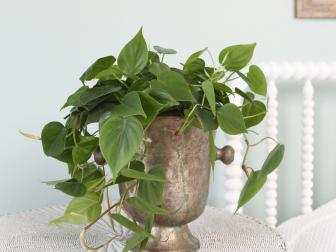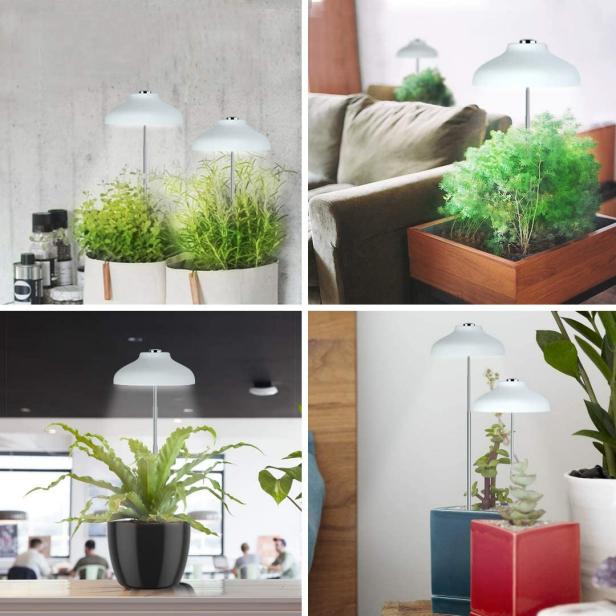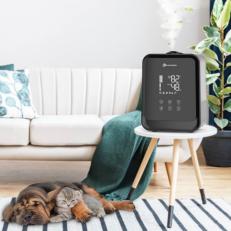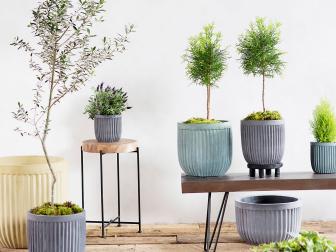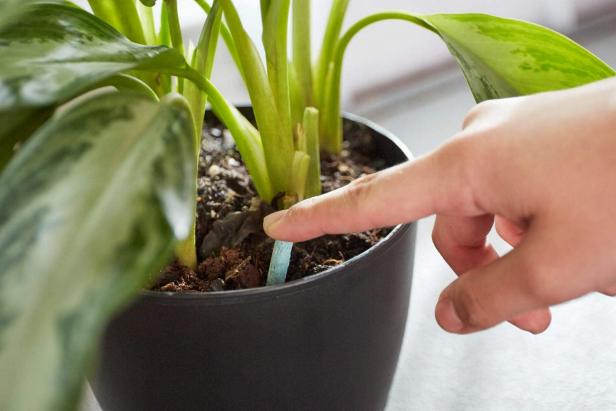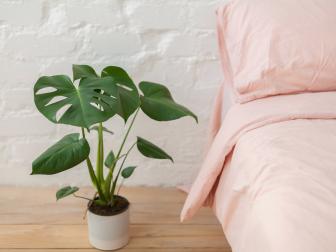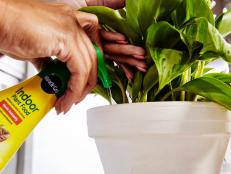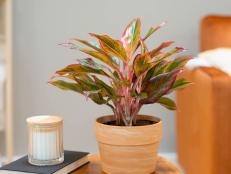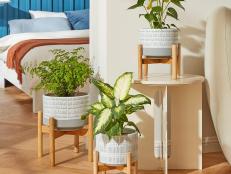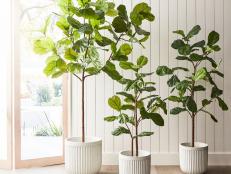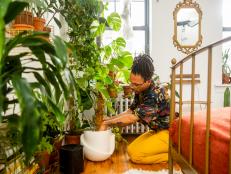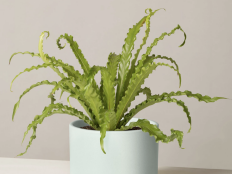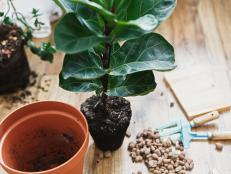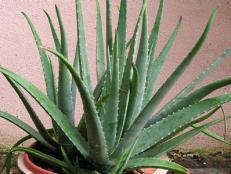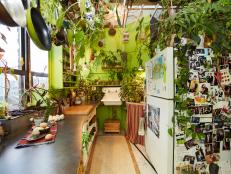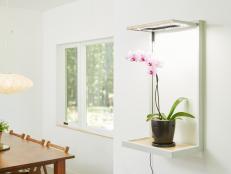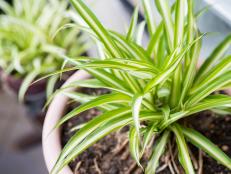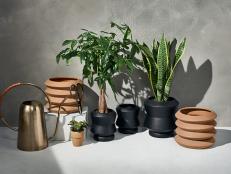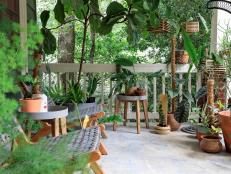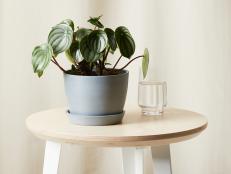9 Keys to Success for Caring for Happy Houseplants
Learn how to keep your indoor plants looking good with these easy maintenance tips.

Shutterstock/Myimagine
Golden pothos (Epipremnum aureum), also called Devil's Ivy, is a tropical vine native to French Polynesia. Read about your plants before you buy, so you can give them the amount of light and other care they require.

When you can’t get outside because the weather’s dreary or you’re stuck at home or in an office, bring a bit of nature indoors with houseplants. Many thrive even in low light, and they do more than brighten up a space. Because they change carbon dioxide into oxygen and help trap pollutants, they’re also good for your health, and they’ll lift your spirits when you can’t work in your garden.
How to Repot Houseplants
Rejuvenate indoor and outdoor plants yearly with these step-by-step instructions.
Lots of houseplants are undemanding and easy to grow, but all indoor plants need a little care now and then. Use our checklist below to keep yours green and growing.
Give Them the Right Amount of Light
Tough survivors like cast iron plant (Aspidistra elatior) or snake plant (Sansevieria), don’t mind dim corners or interiors. Others — especially blooming plants — need bright windows or supplemental fluorescent or grow lights. Read about your plants before you buy and match their needs to the amount of light you’ll be able to give them.
Don’t Drown Your Plants
Most plants need a container with drainage holes, so water doesn’t stand around their roots and cause rotting. If you keep a saucer underneath your plants to catch drips, empty it after watering. Read plant care tags to know how often and how much to water. Moisture indicator probes can also help you determine when to water your plants. We've tried these probes from Amazon that turn blue when the soil is sufficiently moist and white when they need to be watered again. We also love this long-spout watering can and spray mister for houseplants.
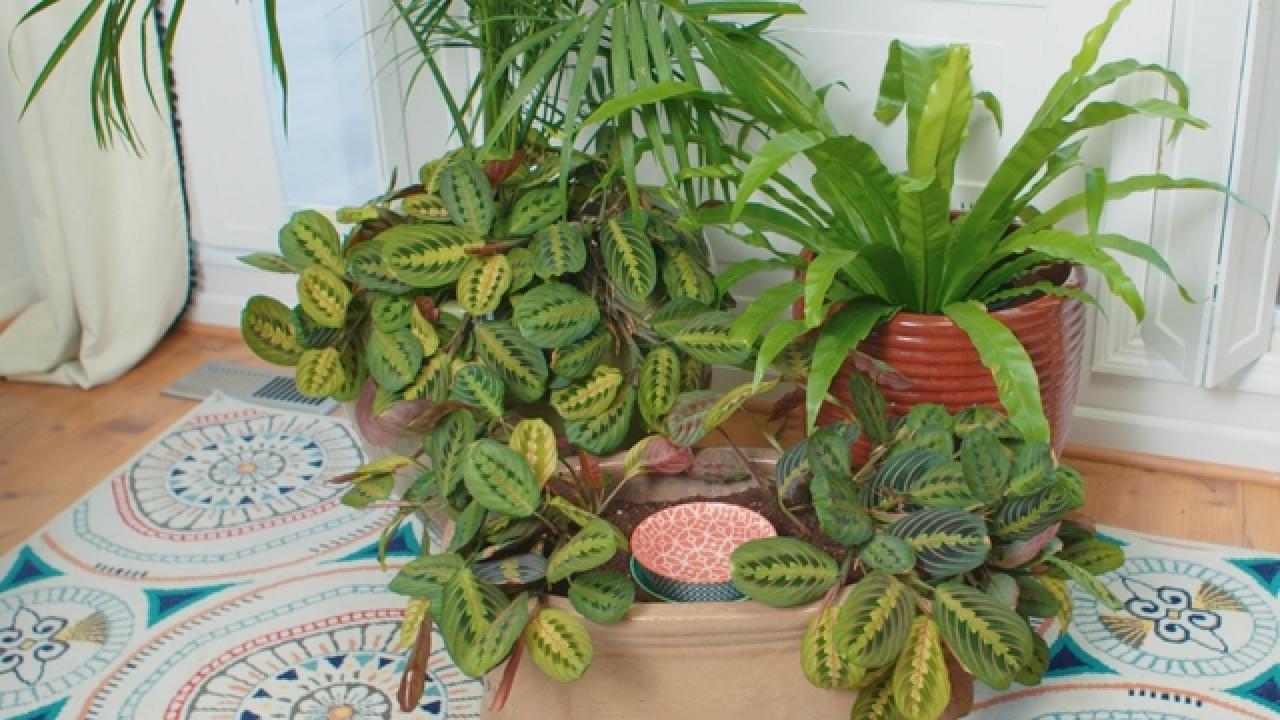
Keep Them Clean
Like anything else in your home, plants get dusty—and dirt can block sunlight. If you see dust, pop your plant in the sink or shower and rinse it with a gentle spray of lukewarm water.
If you’ve got a large potted plant, wipe the leaves with a moist sponge or a dry dust cloth. Gently clean fuzzy-leaved plants, like African violets, with a soft paintbrush or toothbrush. Turn small potted plants upside down and swish them around in lukewarm water to clean them, using your fingers to hold them in place. Let them air dry in a warm spot out of the sun.
Groom When Needed
If you have flowering houseplants, keep the spent blooms picked to encourage more flowers. Take off dead or yellow leaves, too, and cut stems that have lost their leaves to the soil line.
Watch for Drafts
Most plants dislike drafts, so make sure yours aren’t sitting too close to heating or air conditioning vents, or leaky doors and windows.
Add Humidity
If you see brown tips on the leaves of your plants, the air in your home or office is probably too dry for them. Add moisture by grouping plants together, or putting them on top of pebbles in trays or saucers filled with a little water. (Don’t let the pots touch the water so the roots don’t stay constantly wet.) You can also mist your plants or even add a humidifier.
The Best Humidifiers, Tested by HGTV Editors
From the best humidifier for large spaces to our favorite model for nurseries, check out our top recommendations for humidifiers we've tested at every price point.
Watch for Problems
Insects and diseases can spread fast, so check your plants regularly for signs of trouble. Look on top of and underneath leaves and check around stems. Common indoor pests like whiteflies and mealybugs can be knocked off with a spray of water in the sink, but if they persist, you may need to use insecticidal soap, following the manufacturer’s directions. Treat any disease with a product specifically made for it; if you’re not sure what to use, do some research online or visit a garden center or nursery for advice.
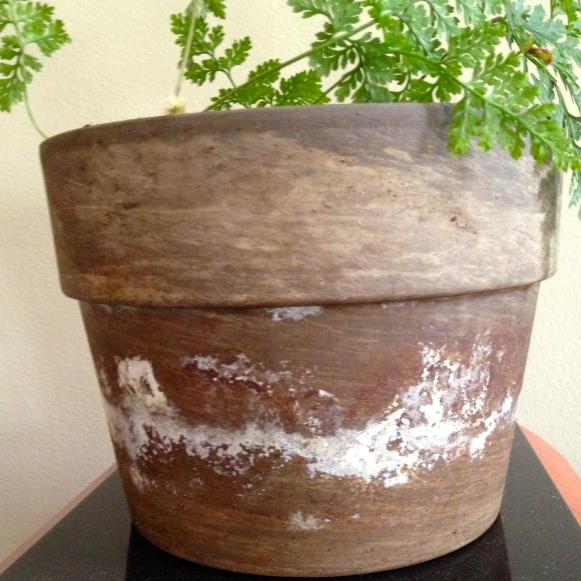
Check the Pot
If your plants start drying out faster than usual, or you see roots poking out of the drainage holes, it’s time to repot. Step up one pot size at a time, and always use fresh potting soil, since the nutrients in the old soil are probably depleted.
Even if your plant hasn’t outgrown its container, you may need to remove it and do some cleanup if you see a white crust on the rim or sides. Potentially harmful salts can build up when you water, so scrub the pot and rinse it thoroughly, or give your plant a new pot.
Our Favorite Pots and Planters for Every Style + Budget
Perk up your patio or indoor space no matter your budget with these stylish planters and pots.
Give Them Food
If you've nailed down watering and lighting but your plants still aren't thriving, they might need nutrients. Try adding some fertilizer. These handy plant fertilizer stakes from Miracle-Gro make it easy and mess-free. Simply insert the spike to aerate the soil, add the fertilizer stick and water.

21 Indoor Plants for Low Light 31 Photos
These houseplants are perfect for homes and offices with little or no natural sunlight.
20 Best Plants for Cleaning Indoor Air 21 Photos
Discover the top 20 air purifying plants that aid in the removal of pollutants.






